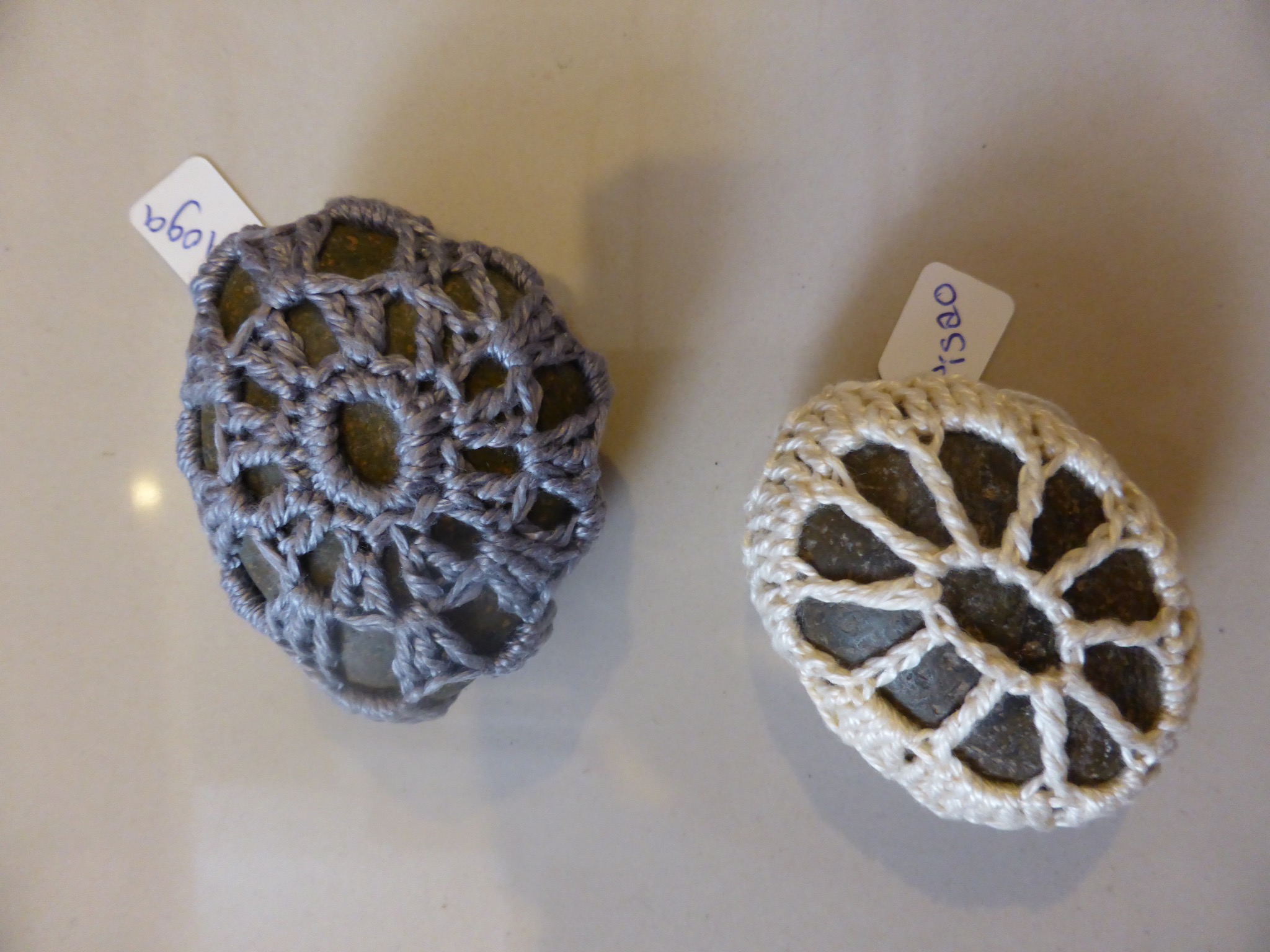Displaced from Burma, many of the Karen hill-tribe sought refuge in Thailand. Traditionally a nomadic people, farming land using a ‘slash and burn’ technique, they would move on when new land was needed, or when somebody died. They saw the death as a sign that there was something bad with the area. Homes, families, livestock and equipment would up and leave in its entirety.
Meeting some of the villagers for the first time I hear how much influence the King of Thailand now appears to have on their lifestyle. Requesting them to stay in one place, reducing the slash and burn farming methods, offering gifts of coffee plants for them to plant in place of traditional agricultural crops of rice and corn. The change in lifestyle is vast. My questions are answered with a standard response referring to the wishes of the King. I later learn that for this village people have lived here for several generations, but I also know this is a much more complicated story.
I am also mindful of the influence the Elephant Nature Park has on them, and my presence there (and my fellow ‘volunteers’). Discovering that the initiative was set up at the request of the village offers some resolution. Researching and planning my trip I came across many numbers of ‘opportunities’ for new and varied experiences – a burgeoning trend in ‘voluntourism’. While seeming well intended and a ‘good’ thing to do, I have considered the implications and longer term impact, that a two week stay in the middle of Africa (or Thailand) will not bear witness to. Reading accounts of how, for example, you will be welcomed into a new community with a local dance and ceremony before making friends with children in need who have already been orphaned/suffered various traumas, only to leave again in two weeks time exacerbating any attachment disorders already present. I have wondered for whom is this ‘opportunity’ for. The use and abuse of animals for the ‘entertainment’ of tourists and allied trades, is something I am also acutely aware of and keen to not support in any way. I am wary of what trinkets are made from at local markets and avoid zoos and tours which do not have animal welfare at it’s heart. However, in visiting Northern Thailand, I have been encouraged to see the elephants and visit a hill-tribe. A challenge is set.
I have come across the work of Lek Chailert and her recent presentation at the Conference of Women in Asia. She set up the Save Elephant Foundation and was honoured as one of six Women Heroes of Global Conservation by Secretary of State, Hilary Clinton, in 2010 (as well as receiving many other international accolades). Growing up in a hill-tribe north of Chiang Mai herself, I decided that this was probably going to be a pretty good project to be a part of. The Elephant Nature Park is a sanctuary for injured, abused and abandoned elephants, and many other animals, just outside of Chiang Mai. The Foundation also run other projects, including the one I visited last week ‘Journey to Freedom’, promoted as a programme aimed at fostering a more traditional relationship between elephants and the Karen hill-tribe (Pag kar yor), while bringing in a new source of income to make it a more sustainable option for them.

up in the mountains (Louise Kenward, 2013)
We are 1,800 metres up, the clouds in the mountains sit at eye level. Surrounded by the chatter of piglets, puppies, cows and goats as they wander about the village, I think I am going to like it here. An absolute rural retreat. We are miles from anywhere, and have just increased the number in the village to 117. A daily routine of being up early, eating rice for breakfast before setting about one or other activity, invariably needing to walk up steep inclines to get anywhere, returning for lunch, with rice, repeating hiking and activity, then rice for tea and sitting around the camp fire for the evening, quickly became the norm. The activities varied, as did the food (it was plentiful and delicious), but rice was always there. Often there were more than two varieties of carbohydrate at each meal; toast and rice; potatoes and noodles and rice; chips and potatoes and noodles and rice. We needed to do more walking.
We are introduced into the life of the village, blessed by the elder before visiting local craftswomen and hearing about daily life. Day to day routine is dictated by seasons and weather. If it rains the truck doesn’t work…I later realise the truck works fine, it’s the mud roads that don’t work up and down such steep inclines. We have to walk a little further. It’s harvest time in the village so our activities include cutting rice and picking and hulling corn. It is small contribution to the village work, corn can be seen growing as far as the eye can see, then when you walk around the side of the mountain, there is corn as far as the eye can see, up and down the mountains, for miles, there is corn. It does give me a better insight into what it is like to work and live in the village. It is also really good to be doing something active and physical after such long journeys. We later learn that corn currently sells at 4 baht a kilo (about 8p), that’s after it’s been picked, hulled, dried, packed and taken to the city. We are instantly hushed as this translates to our own earning potentials. I hope the coffee proves a more valuable crop for them.
Mid week we get to meet our first elephant! Hibiscus (translation) is six years old. She is recovering from a recent operation to her trunk when she had a stick stuck in it, so is being kept a close eye on by her mahout. The wound is healing well. Corn helps. We probably feed her the amount we picked in a day within an hour or so. She shows us how she is able to stack cobs of corn along the inside of her trunk while munching on another cob, stripping it of its amber gems and spitting out the pithy middle before searching out the next one. The dexterity of her trunk is incredible, stripping corn of it’s husk with her feet and snuffling out any last nuggets of food in my pockets.
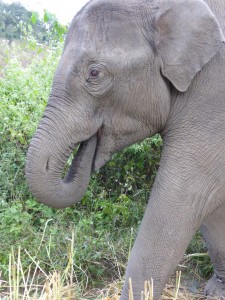
Hibiscus (Louise Kenward, 2013)
Back in the village we visit the local nursery school, children from ages 2 to 6 years attend. There are about twenty when we arrive, with one teacher. Initially cautious (and wisely so!) we improvise with a musical accompaniment from one of our more gifted volunteers and sing some songs badly at them. Bringing out the paper we are rescued from any further humiliation (temporarily) and I am quickly surrounded by small children watching my folding techniques as I make my own childhood memories of paper games. Interspersed with paper aeroplanes, a jungle gym with the more agile, some english words are exchanged with those of the local hill-tribe language. I do my best to remember the few words we have been taught. Lunch time arrives and we leave, spending the afternoon hiking through the mountains (including the incredible corn field ‘short cut’) and through rivers to see the most unexpected and beautiful waterfalls. A refreshingly welcome shower.
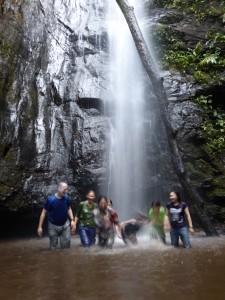
secret waterfall (Can Mapomjai, 2013)
Returning to the school the following day, the previous day’s activities make more sense as we are greeted by a bunch of eager children waiting to help us pick up litter, weed the paths and clean in and around the school. Again, a gesture to the greater need, but a step, and cumulatively the project is building on each week’s work.
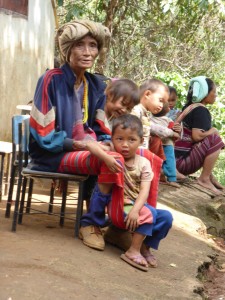
School visit, Louise Kenward, 2013
The culmination of the week is to follow a group of elephants out into the wild. Watching the two adult females with two baby twins (born since their mother was rescued from the tourist trade), is captivating. The three year olds, do what three year olds do best, running wild and playing, while the mother and ‘aunty’ try to herd them, with help from the mahouts. We are instructed this time to stay back, this is a time to watch, not to interfere. it is a privilege to do so. We follow them into the jungle and up and down the steep banks and through the rivers. They take a leisurely pace (fortunately), snacking on bamboo as they travel and stopping for a drink in the river. I have lost track of time, I have no idea how long or how far we have travelled. Eventually, however, we have to leave and watch them climb another steep bank into the distance. Elephants living in the wild.
Another afternoon and another beautiful waterfall. More walking, but it feels much easier than it did at the beginning of the week. Returning to the village I take off my shoes to find a number of scratches, grazes, midge and mosquito biites and four leach bites (all of which have now stopped bleeding). The hysterics of bugs and creepy crawlies has long been deterred by the presence of an environmental scientist and three recent graduates, all of whom have spent the week trying to identify species of flora, fauna, and anything that crash landed into dinner. One enormous stag beetle and a June beetle (also known as a Christmas beetle in Australia apparently) along with a number of brightly coloured spiders and trails of ants/termites are just some of the creatures studied.
I have made more new friends (both villagers and volunteers) and I will watch the progress of the project with interest. Elephant Nature Foundation are currently raising money to buy more land to be able to rescue more elephants see www.saveelephant.org for more information.
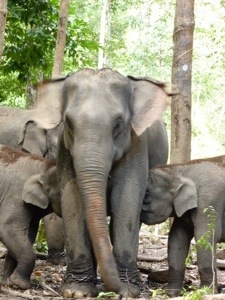
Elephants living in the wild (Louise Kenward, 2013)





